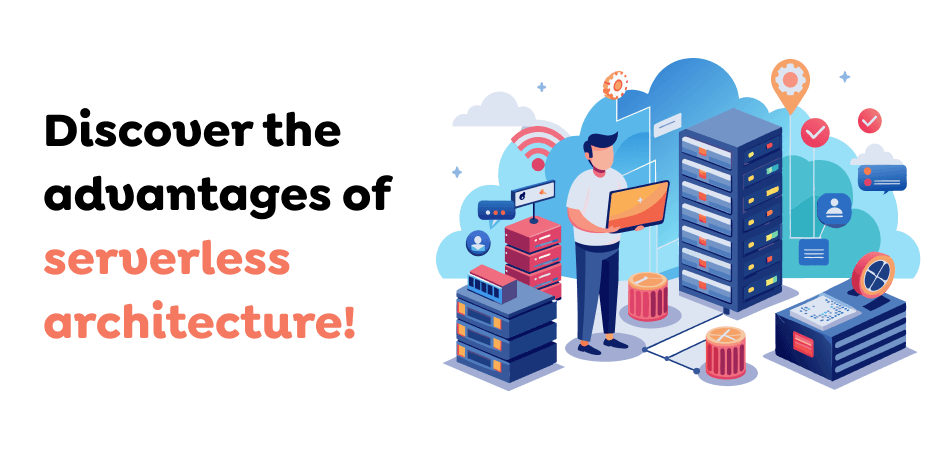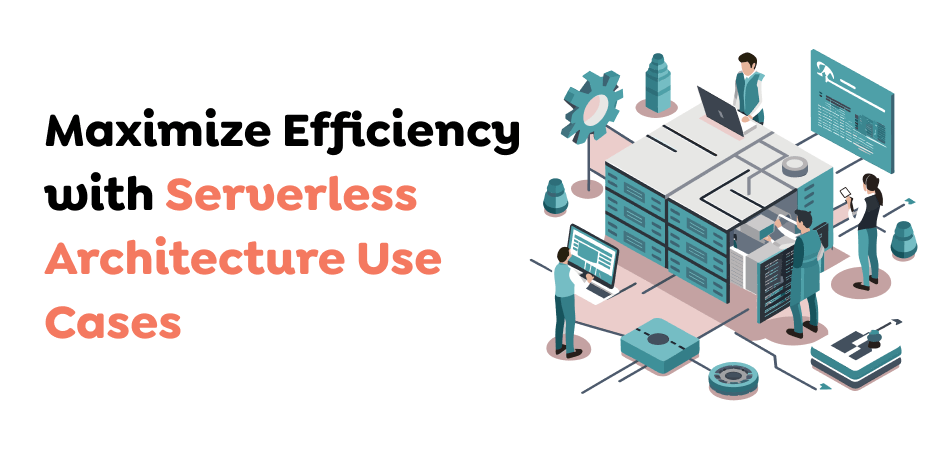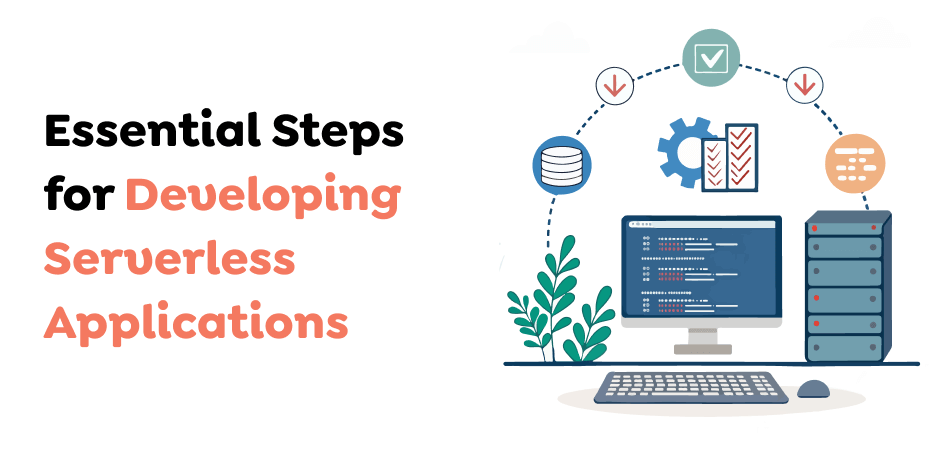30 Dec 2024
How to Build Scalable Apps with Serverless Architecture in Canada
Matthew Connor

As mobile app development continues to thrive in Canada, businesses are seeking innovative and cost-efficient strategies to launch their digital solutions effectively. Among the latest advancements, serverless architecture has emerged as a game-changing approach, allowing developers to build and scale applications without relying on traditional server infrastructure.
This modern methodology offers distinct advantages for app developers in Canada, including optimized resource utilization and enhanced security measures. These benefits make serverless architecture an ideal choice in Canada’s dynamic and highly competitive digital landscape. By embracing this technology, businesses can stay ahead of the curve while delivering seamless user experiences. Firstly, let’s understand serverless architecture.
Understanding Serverless Architecture

Serverless computing is a cloud computing model in which cloud providers boost, manage, and scale the backend entirely, and customers deploy applications based on that. In this model, customers outsource all server activities to cloud service providers like AWS, Google Cloud, Azure, etc., to perform activities such as server acquisition, adding more space, or fixing a problem with the server. Developers focus on code and functions to write and deploy. They don’t bother about infrastructure management; the provider does that for them. This approach helps to be less time-consuming in development cycles because it releases from managing servers and their related issues.
One of the standout features of serverless architecture is its event-driven nature. Applications themselves automatically scale based on usage patterns, thus enabling optimal resource usage and cost optimization. For instance, during peak usage, the architecture adjusts dynamically to accommodate the load, and during downtime, it reduces resource consumption. This is due to the flexibility that is associated with serverless architectures in addition to the pay-as-you-go approach that they support, making them ideal for any organization looking for a way to cut down on costs while at the same time providing clients with top-of-the-range applications.
Now, let’s discover the benefits of serverless architecture.
Also Read : Key Strategies to Build a Successful Mobile App for Startups
Key Benefits of Serverless Architecture

1. Cost Efficiency:
One of the most significant benefits of serverless computing is its cost efficiency. Typically, all that is available are conventional server systems, meaning a business has to pay for a dedicated server, even if it is merely having occasional traffic or not using any of the server’s resources. A serverless model minimizes cost more than other architectures through the use of the pay-as-you-go model, where application developers only pay for the time the applications spend running on the system. This is also cost-effective as it removes any specific overhead costs, which often proves to be beneficial for startups and small businesses in Canada. With improved budgets and reduced investment in infrastructure, serverless computing ensures the success of Canadian businesses in developing quality applications without much pressure.
2. Dynamic Scalability:
Serverless architecture offers unmatched scalability for mobile apps with fluctuating user demands. Cloud providers allocate these resources dynamically in real time, depending on traffic intensity. This ensures applications can handle sudden surges in user activity, such as during holiday sales or special events in Canada, without downtime or performance issues. Automatic scaling helps developers meet unanticipated demand levels by giving their apps the required scalability in all situations and circumstances.
3. Accelerated Development and Deployment:
Serverless computing accelerates the development process because all the servers’ setup concerns are with the serverless service provider. This means developers do not need to worry about admin work and may concentrate on cultivating features and enhancing app performance, which the cloud providers will take care of. This approach also helps to minimize the time it takes to construct the applications, which is paramount in the Canadian mobile application market.
4. Robust Security and Compliance:
Data security and regulatory compliance are paramount for Canadian businesses, particularly in sectors like healthcare and finance. As an architectural model, serverless solutions provide a number of inherent security qualities, such as data protection and threat identification, using third-party applications such as AWS and Google Cloud. These providers comply with international security measures to guarantee the security of this data.
5. Optimized Resource Utilization:
With serverless, resources are elastic as they are extended or reduced depending on the load that the particular application is handling at any one time. During off-peak hours, the system scales down to avoid unnecessary resource usage, while during high-demand periods, it scales up to maintain efficiency. This aspect is particularly helpful for applications where the traffic does not remain constant throughout the day, and such apps are used mostly for weather or events. In this way, resources are utilized as per the needs of the business, and as a result, waste is minimized.
6. Enhanced Agile Development and Integration:
Serverless software architecture is highly compatible with agile development processes since it enables developers to launch and test smaller chunks of their own controls. This event-driven design favors the variable and frequent iteration cycle manners and the CI/CD tendencies governed in Canada’s technological sector. Application architects can introduce changes to the application or even introduce new features without necessarily affecting the overall application, giving the users a smooth experience. This makes it possible for businesses to make changes as required by the users and other market conditions while fixing new updated versions rapidly without significant disruptions.
7. Environmental Sustainability:
Serverless computing promotes energy efficiency by optimizing resource usage. Serverless computing is a little different in that it does not require constant energy to support servers. This lowers energy consumption and makes a minimal environmental impact on creating and running applications. For Canadian businesses committed to environmental responsibility, adopting serverless computing aligns with sustainable practices, making it an appealing choice for eco-conscious developers and companies.
-
Global Availability:
Serverless computing can easily be implemented in different parts of the world so that applications can be easily accessed from different parts of the world. Using cloud providers’ infrastructure located in different areas of the world, businesses can offer the same level of end-user experience irrespective of the location of the cloud provider.
-
Improved Reliability:
The serverless solution provides high reliability for applications since application workloads are divided among multiple servers, and failures are mitigated. This redundancy eliminates the possibility of businesses not meeting the service demand expected from them due to times of high demand or probably due to some form of disruption.
-
Focus on Core Development:
Having serverless computing handle back-end tasks means developers can work on new functionalities and enhance user experience. This new focus benefits businesses by allowing them to invest more efficiently and effectively in developing new offerings rather than merely maintaining current ones, thus gaining an improved growth rate and competitive positioning in the digital environment.
After knowing the benefits of serverless architecture, let’s explore its use cases.
Also Read : Transform Your Business with a Mobile App: Discover How We Bring Your Ideas to Life
Use Cases of Serverless Architecture

Serverless computing is highly suited for executing short-lived tasks and managing workloads with irregular or unpredictable traffic patterns. Below are some key scenarios where serverless can be effectively utilized:
-
Event-Driven Workflows:
Serverless functions are particularly good for performing tasks on request from the user or on the occurrence of an event. For instance, when a user signs up to your platform, it can trigger a cascade of actions like updating a database and sending a welcome email, all done in serverless functions.
-
Dynamic API Development:
By integrating serverless functions with tools like Amazon API Gateway, developers can create scalable RESTful APIs that automatically adjust to fluctuating user demands.
-
Background Task Processing:
Serverless solutions are ideal for performing background tasks like rendering product data or transcoding video files after they are uploaded. These processes run without disrupting the application’s performance or increasing latency for users.
-
Enhanced Security Operations:
Serverless functions can perform critical security tasks, such as scanning containers for vulnerabilities or automating two-factor authentication and SSH verifications, ensuring robust application security.
-
Automated CI/CD Pipelines:
Serverless architectures can streamline stages of continuous integration and continuous delivery workflows. For instance, functions can automate build creation after code commits or trigger tests for pull requests, accelerating development.
-
Gradual Migration to Serverless:
Transitioning to serverless doesn’t require a complete overhaul. Developers often begin by moving specific components of their applications to serverless, enabling a seamless and scalable adoption while retaining other parts on traditional servers.
Serverless architecture’s flexibility and extensibility allow businesses to progressively expand their use, unlocking new opportunities for innovation and operational efficiency.
Moving forward, let’s discuss the tools used in serverless computing.
Also Read : Exploring the Rapid Growth of Augmented Reality Mobile Apps in Canada: A Vision for the Future
Tools to Facilitate Serverless Architecture
The transition to serverless computing becomes smoother and more efficient with the right tools, enabling optimized application performance and reliability. Here’s a detailed look at tools that support serverless workflows:
-
Serverless Deployment Frameworks:
Tools such as the Serverless Framework, AWS SAM, and Google Cloud Functions framework offer great utility in creating and running serverless applications. These tools use application programming interfaces, including AWS, Azure, and Google Cloud services. Serverless computing allows developers to define functions, triggers, and permissions for servers easily. These frameworks enable and are implemented in programming languages such as Python, JavaScript, Node.js, Go, Ruby, Java, and C#.
-
Security Tools for Serverless Functions:
Software such as Snyk, Aqua Security, and AWS Lambda Security Scanner scans serverless functions to check that they are a secure environment free of dependency vulnerabilities. These tools afford runtime protection against forms of threats such as code injection and code execution. It can be embedded with programming languages such as Python, JavaScript, and Go, which are frequently used in serverless functions.
-
Real-Time Monitoring and Troubleshooting:
Monitoring tools such as Datadog Serverless Monitoring, AWS CloudWatch, and New Relic provide real-time insights into serverless application performance. For example, Datadog integrates with frameworks and languages, including Python, JavaScript, Java, and C#, which means that it is versatile in relation to the development stack. These tools help developers monitor metrics, trace, and log things, which allows them to identify and solve problems such as cold start and misconfiguration.
-
Cross-Platform Compatibility and Quick Deployment:
Monitoring solutions like Dynatrace and Google Cloud Operations Suite (formerly Stackdriver) support integration across various cloud providers and programming languages, including Node.js, Java, and Python. These tools support simple deployment and monitoring regardless of the underlying environment.
-
Ensuring Application Resilience:
There’s also complete real-time visibility for the communications between serverless functions and infrastructure elements like AWS X-Ray and Elastic Observability. These tools work with various programming languages, so applications developed in Java, Python, or JavaScript provide scalability, security, and high performance.
By leveraging these specialized tools and programming language support, businesses can maximize the potential of the serverless model while ensuring their applications are robust, secure, and user-friendly.
Now, let’s talk about how to build serverless applications.
Also Read : How does React Native contribute to reducing mobile app development costs?
How to Build Serverless Applications

Developing serverless applications requires a unique approach that is distinct from traditional software development. The following steps outline the key considerations and practices for building robust serverless solutions.
Step 1: Grasp the Serverless Framework
Serverless computing is particularly suitable for applications with fluctuating traffic or those following a microservices design. This approach breaks down applications into smaller, independent components, optimizing scalability and flexibility.
Step 2: Select an Ideal Cloud Provider
Choose a serverless provider that aligns with your project requirements. Evaluate factors like supported programming languages, integration options, pricing, cold start performance, and additional features. Leading providers include AWS Lambda, Google Cloud Functions, and Azure Functions.
Step 3: Design a Serverless Application Architecture
To maximize the advantages of serverless computing:
- Event-Driven Approach: Build components that respond to triggers, such as database updates, file uploads, or API calls.
- Stateless Design: Ensure each function operates independently without retaining its internal state. Use external services like databases or cloud storage for state management.
- Microservices Orientation: Break application functionality into modular, deployable units for easier scalability and updates.
Step 4: Configure the Development Environment
Set up a streamlined development setup using specialized tools:
- Utilize frameworks like Serverless Framework, AWS SAM, or Azure Functions Core Tools to simplify application deployment and management.
- Incorporate testing and simulation tools to replicate the cloud environment locally, reducing debugging efforts during development.
Step 5: Write Efficient Serverless Functions
Develop compact, single-purpose functions that execute seamlessly in response to triggers. Leverage cloud-managed services for database, authentication, and storage integrations to reduce operational complexity.
Step 6: Optimize Dependencies
Keep deployment packages lightweight by including only essential libraries and dependencies. This approach improves performance, especially during cold starts.
Step 7: Deploy and Automate Processes
Implement CI/CD pipelines using tools like GitHub Actions, Jenkins, or CircleCI to automate deployment and updates. This ensures a streamlined release process and minimal downtime for your serverless applications.
Following the above-mentioned steps, developers can easily create and deploy cost-efficient and highly scalable serverless solutions that are successful for modern businesses.
After exploring how to build a serverless application, let’s discuss its key security practices.
Also Read : How Much Does It Cost to Develop an App in 2025? A Comprehensive Guide
Best Practices for Security in Serverless Architectures

Ensuring robust security measures is critical when working with serverless environments. Implement these best practices to safeguard your serverless applications.
1. Implement the Principle of Least Privilege
Adhere to the Principle of Least Privilege (PoLP) by assigning each serverless function only the permissions it needs to perform its specific tasks. Restrictions help to contain a threat and prevent a security threat from actually occurring in the first place.
2. Protect Application Secrets
Avoid embedding sensitive information, such as API keys, tokens, or database credentials, directly into your code or environment variables. The recommended approach is to use secure tools like AWS Secrets Manager, Google Cloud Secret Manager, or even the Azure Key Vault to handle such confidential information.
3. Validate Inputs Thoroughly
It is also crucial to perform intensive input validation to avoid such holes as SQL injection, command injection, and cross-site scripting (XSS). It is critical to sanitize input since serverless functions work directly with third-party databases and APIs for attacks.
4. Secure API Gateways
When using API gateways, enable features that enhance security, such as:
- Rate Limiting: Prevent overloading the API with excessive requests.
- Authentication: Implement robust access control through IAM roles, API keys, or OAuth.
- CORS Policies: Configure Cross-Origin Resource Sharing (CORS) to prevent unauthorized access to your API endpoints.
5. Use Encryption for Data Protection
Ensure all data is encrypted during transmission and storage to minimize the risk of unauthorized access.
- Use HTTPS for serverless APIs to secure communication.
- Encrypt database connections to safeguard sensitive data.
- Enable encryption at rest for storage services to protect stored information.
By following these strategies, you can build a secure serverless model that reduces vulnerabilities and strengthens data protection across your applications.
Conclusion
Serverless architecture represents a transformative approach to modern application development. By leveraging its cost efficiency, dynamic scalability, and robust security, Canadian businesses can create innovative, high-performing apps tailored to today’s fast-paced digital ecosystem. With its focus on simplicity, agility, and sustainability, the serverless model is set to redefine how applications are built, deployed, and managed, empowering businesses to stay ahead in a competitive landscape.
Ready to transform your app idea with serverless architecture? Get in touch with Techugo today to build scalable, secure, and cost-effective solutions!
Get In touch
We are excited to here from you and let’s start something special Together. Call Us for any inquiry.
Write us
sales@techugo.caJust a call away
About you




